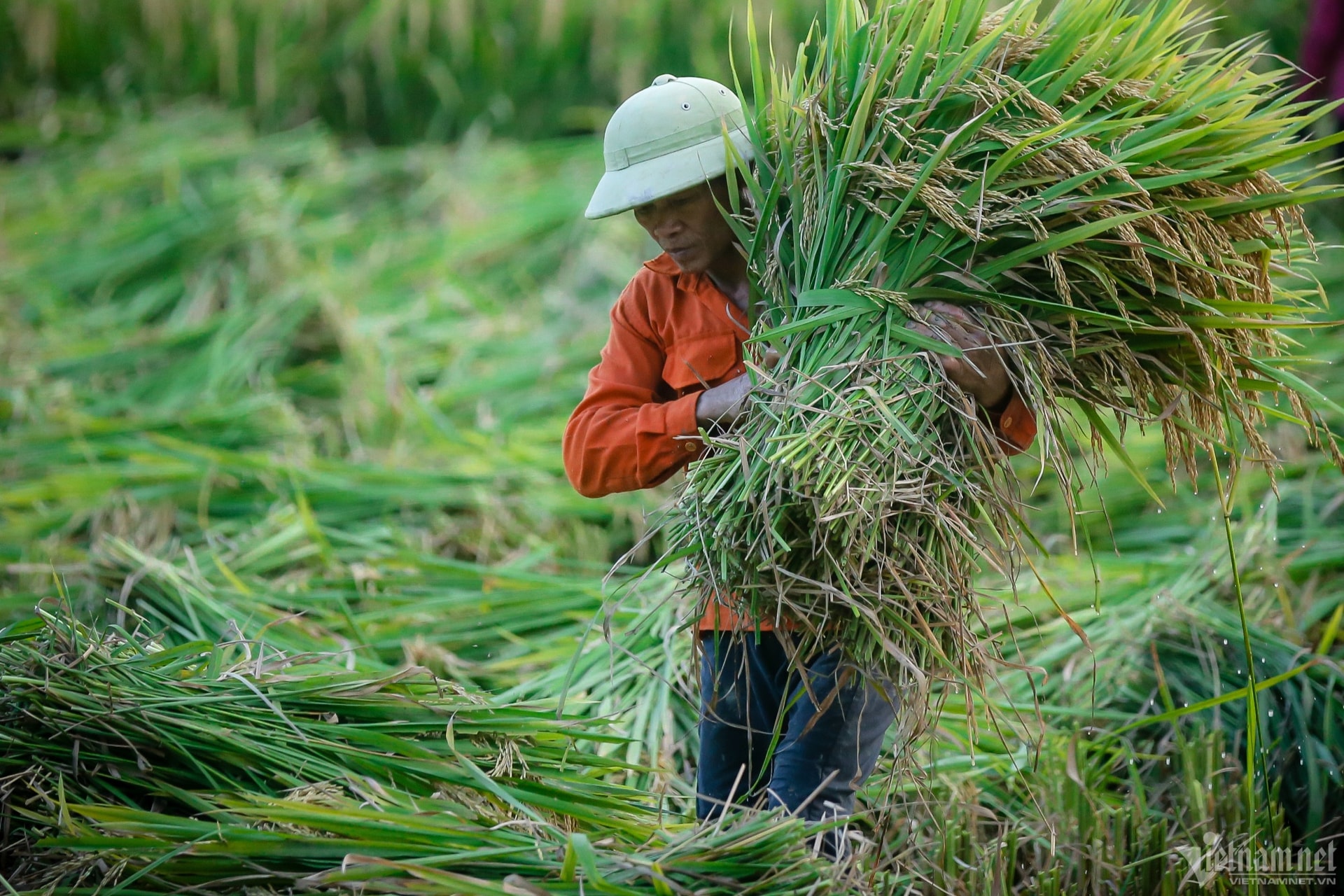Vietnam’s rice export price has decreased for two consecutive sessions, to 628 USD/ton. Meanwhile, domestic rice prices remain high, causing businesses to stop buying and selling.

After rising to a 15-year high in the last two trading sessions,export rice priceThe world turned to decline in all commodities.
Data from the Vietnam Food Association (VFA) shows that after increasing to 643 USD/ton for 5% broken rice and 628 USD/ton for 25% broken rice at the end of August, in the session on September 6, the prices of these two items turned around and dropped sharply by 10 USD/ton.
By the session on September 7, 5% broken rice and 25% broken rice continued to decrease by another 5 USD/ton, to 628 USD/ton and 613 USD/ton, respectively.
Similarly, Thai and Pakistani rice prices shared a downward trend across all commodities. Accordingly, on September 7, the price of 5% broken rice from Thailand fell by $10/ton to $618/ton, after falling by $5/ton in the previous session; the price of 25% broken rice from this country fell sharply by $12/ton to $563/ton.
On the same day, Pakistani rice prices simultaneously decreased by 5 USD/ton, to 608 USD/ton for 5% broken rice and 538 USD/ton for 25% broken rice.
The above data shows that Vietnam's rice export price is still the highest in the world. Meanwhile, the price of 5% broken rice from Thailand and Pakistan is on a downward trend, gradually falling to the mark of 600 USD/ton.
Mr. Pham Thai Binh, Chairman of the Board of Directors of Trung An High-Tech Agriculture Joint Stock Company, said that the recent sharp increase in rice prices on the world market was partly due to the psychological effect after India and a number of countries imposed an export ban on this commodity.
However, the Philippines' imposition of a ceiling on domestic retail rice prices - a move to stabilize rice prices and prevent manipulation and hoarding when retail prices increase at an alarming rate - has had a strong impact on global rice prices.
Because the Philippines is the world's largest rice importer and also the largest customer of Vietnamese rice. They set a ceiling price much lower than the world rice price, meaning that countries can hardly export to this market due to the price difference. That has caused the world rice price to decrease in recent sessions, Mr. Binh said.
On the other hand, the decrease in rice prices will make it easier for businesses to access importers. Because the Philippines, Indonesia and other countries importing 5% broken rice from Vietnam all have high prices, it is almost impossible to buy at higher prices.
However, the price of rice in the domestic market is still too high. This is a problem that makes businesses stuck, not daring to buy and sell rice, because if they buy for export, they will suffer heavy losses.
“Domestic rice prices have cooled down but are still high, around 8,000 VND/kg - equivalent to the export price of 5% broken rice being at 680-690 USD/ton,” Mr. Binh calculated.
Mr. Binh predicted that the world rice price cannot fall much. In recent sessions, the price has tended to decrease, but only decreased the previous increase due to psychology. However, for rice export activities to proceed normally, the domestic rice price must decrease to 7,000-7,200 VND/kg.
In the Mekong Delta, the cost of rice production for farmers is only about 3,500 VND/kg. Therefore, selling at 7,000 VND/kg ensures profit. In case the price of rice remains sky-high, far exceeding the current export price, businesses will not be able to buy and sell.
“Currently, businesses only dare to sign rice export contracts for a few containers. Businesses do not dare to sign large contracts of several dozen tons for fear of having to compensate for losses,” he shared.
In fact, recently, some businesses in An Giang and Can Tho have negotiated with import partners to propose a price of 680-700 USD/ton but have not received agreement. Delivery deadlines have also been extended to avoid losses for both parties.
In the domestic market, according to statistics from VFA, rice prices in the last week of August (from August 25 to 31) were adjusted up. Accordingly, the average price of rice in the field increased to 8,079 VND/kg, rice in the warehouse was 9,242 VND/kg, brown rice grade 1 was 12,646 VND/kg, white rice grade 1 was 14,750 VND/kg, 5% broken rice was 14,564 VND/kg, 15% broken rice was 14,333 VND/kg, 25% broken rice was 14,033 VND/kg,...
On September 8, rice prices in the Mekong Delta fluctuated at 7,800-8,400 VND/kg, rice prices ranged from 11,950-14,200 VND/kg.
According to Vietnamnet